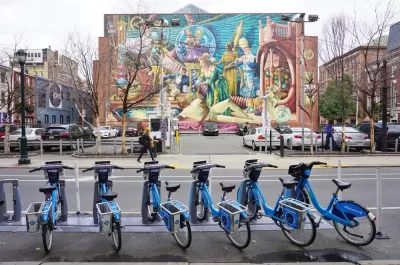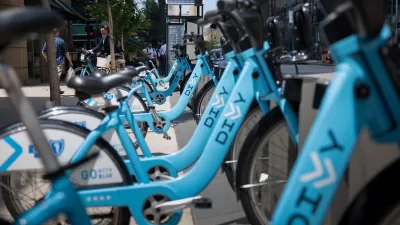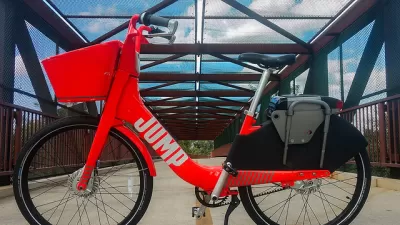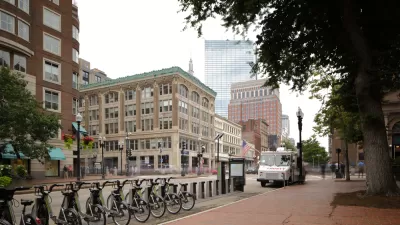As bikeshare operations have evolved and spread they've begun to differentiate, not just between docked and dockless, but also in terms of public or private ownership and electric and non-electric offerings.

Bikeshare operations have always varied from city to city, but as this mode of transit has become more popular, it's also become more diverse. "It’s easy to forget how young and unformed this transportation mode is: The first modern municipal bikeshare, Paris’s Velib, launched in 2007, and the first programs in the U.S. appeared in 2010," Alex Baca reports for CityLab.
Today there are a number of different types of bike share. One thing driving this differentiation is the variety of owners and funders of the services. "For example, D.C.’s Capital Bikeshare is publicly funded and publicly owned, but privately operated by Motivate, a firm that also operates Divvy in Chicago and Citibike in New York City. Divvy, like CaBi, is publicly funded, whereas Citibike is publicly owned but funded through sponsorships from Citibank and Mastercard," Baca writes.
The advent of dockless bikeshare changed the types of ownership again, in part because of the difference in equipment costs. "What users might not realize that the bikes themselves are also vastly cheaper, compared to traditional equipment. Each dockless bike costs its company about $200; traditional bikeshare bikes—the PBSC tanks, SoBi’s pre-Jump “smart bikes,” B-Cycle’s cruisers—are all north of $2,000," Baca writes.
If cities want to get the most out of this changing mobility service, they need to be careful how they craft their regulations, Baca argues. "Cities should fastidiously demand companies share their ridership data, and should hold operators to key performance indicators to keep bikes balanced and accessible." This would apply to e-bike, scooter and e-scooters as well.
FULL STORY: What Cities Need to Understand About Bikeshare Now

Study: Maui’s Plan to Convert Vacation Rentals to Long-Term Housing Could Cause Nearly $1 Billion Economic Loss
The plan would reduce visitor accommodation by 25,% resulting in 1,900 jobs lost.

North Texas Transit Leaders Tout Benefits of TOD for Growing Region
At a summit focused on transit-oriented development, policymakers discussed how North Texas’ expanded light rail system can serve as a tool for economic growth.

Why Should We Subsidize Public Transportation?
Many public transit agencies face financial stress due to rising costs, declining fare revenue, and declining subsidies. Transit advocates must provide a strong business case for increasing public transit funding.

How to Make US Trains Faster
Changes to boarding platforms and a switch to electric trains could improve U.S. passenger rail service without the added cost of high-speed rail.

Columbia’s Revitalized ‘Loop’ Is a Hub for Local Entrepreneurs
A focus on small businesses is helping a commercial corridor in Columbia, Missouri thrive.

Invasive Insect Threatens Minnesota’s Ash Forests
The Emerald Ash Borer is a rapidly spreading invasive pest threatening Minnesota’s ash trees, and homeowners are encouraged to plant diverse replacement species, avoid moving ash firewood, and monitor for signs of infestation.
Urban Design for Planners 1: Software Tools
This six-course series explores essential urban design concepts using open source software and equips planners with the tools they need to participate fully in the urban design process.
Planning for Universal Design
Learn the tools for implementing Universal Design in planning regulations.
City of Santa Clarita
Ascent Environmental
Institute for Housing and Urban Development Studies (IHS)
City of Grandview
Harvard GSD Executive Education
Toledo-Lucas County Plan Commissions
Salt Lake City
NYU Wagner Graduate School of Public Service





























